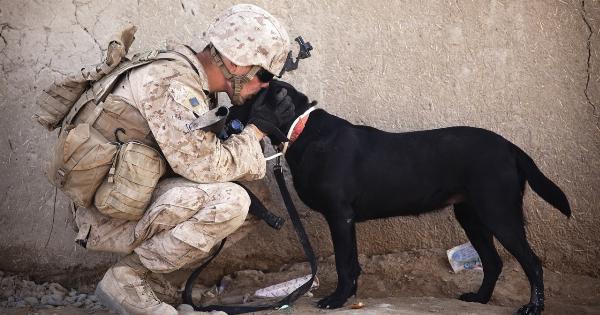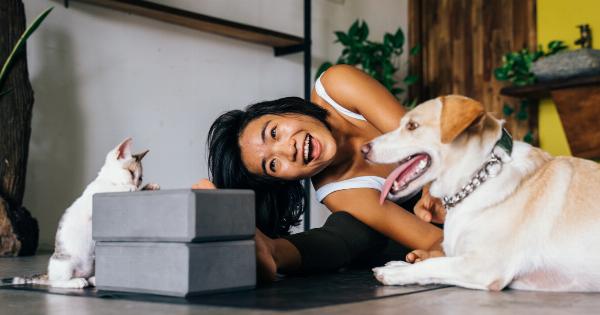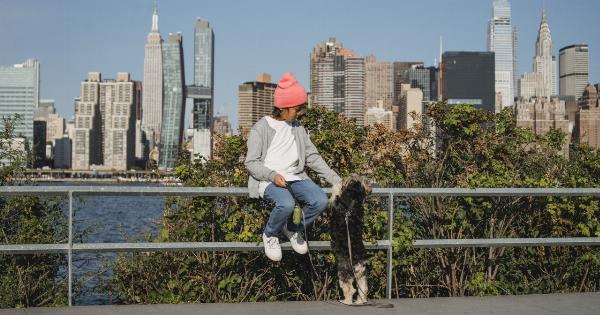Dogs, like humans, can experience fear and anxiety in certain situations. Whether it’s the sound of thunder, the sight of a stranger, or a traumatic experience, scared dogs can exhibit a range of behaviors indicating their distress.
As responsible pet owners, it is our duty to provide support and help our furry friends feel safe and secure. In this article, we will explore some effective tips and techniques for helping scared dogs overcome their fears and create a calmer environment for them to thrive.
Understanding Fear in Dogs
Fear is a natural response that plays an important role in a dog’s survival instincts. However, excessive or prolonged fear can have detrimental effects on their overall well-being.
It’s crucial for pet owners to recognize the signs of fear in their dogs, which may include:.
- Tail tucked between legs
- Trembling or shaking
- Panting excessively
- Excessive barking or growling
- Attempts to escape or hide
- Restlessness or pacing
- Dilated pupils
By understanding and acknowledging these signs, you can take appropriate steps to support your scared dog and help them feel safe and secure.
Create a Safe Space
One of the most effective ways to help a scared dog is to create a designated safe space within your home. This can be a specific room or area where your dog can retreat to when they feel anxious or frightened.
Make sure this space is comfortable and filled with familiar items such as their bed, toys, and blankets. It’s essential to remember that this safe space should be completely off-limits to visitors or other pets, allowing your dog to have a safe haven when they need it the most.
Positive Reinforcement through Training
Training your scared dog can have a significant impact on their overall confidence levels and reduce fear-induced behaviors. Positive reinforcement training techniques can be especially beneficial in helping your dog overcome their fears.
Reward-based training methods involve using treats, praise, and affection to reinforce desired behaviors and encourage a positive association with triggering stimuli. Gradually exposing your dog to the source of their fear, such as loud noises or unfamiliar objects, and rewarding them for staying calm can help desensitize them over time.
Seek Professional Help
If your dog’s fear and anxiety are severely impacting their quality of life, it may be beneficial to seek professional help.
A qualified veterinarian or animal behaviorist can assess your dog’s behavior, provide a proper diagnosis, and develop a personalized treatment plan. They may recommend behavioral training, medications, or other interventions to help your scared dog feel safe and secure.
Utilize Calming Techniques and Tools
There are various calming techniques and tools available that can help alleviate fear and anxiety in dogs:.
- Thundershirts: These specially designed garments apply gentle pressure to the dog’s body, providing a calming effect similar to a long-lasting hug.
- Aromatherapy: Certain scents, such as lavender or chamomile, have calming properties that can help soothe your scared dog. You can use essential oil diffusers or sprays in their safe space.
- Music and White Noise: Playing soft classical music or using white noise machines can help drown out triggering sounds and create a more relaxing environment for your dog.
- Calming Supplements: Natural calming supplements, such as chamomile or melatonin, can help promote relaxation in dogs. Consult with your veterinarian before starting any supplements.
- Therapeutic Massage: Gentle massages can help reduce muscle tension, promote relaxation, and create a sense of security for your scared dog.
It’s important to note that each dog is unique, and not all calming techniques or tools may work for every scared dog. Patience and consistency are key when experimenting with different methods to find what works best for your canine companion.
Establish a Consistent Routine
Implementing a consistent daily routine can provide a sense of security and predictability for scared dogs. Dogs thrive on structure and knowing what to expect, which can help reduce their anxiety.
Stick to regular mealtimes, exercise schedules, and bedtime routines to establish a reliable routine that your dog can rely on.
Counter-Conditioning and Desensitization
Counter-conditioning and desensitization are techniques often used to help dogs overcome their fears by gradually exposing them to triggering stimuli while providing positive associations.
It involves exposing your dog to a mild version of their fear-inducing stimulus and rewarding them for calm behavior. Over time, you can gradually increase the intensity or proximity of the stimuli while ensuring your dog remains relaxed and comfortable.
Avoid Reinforcing Fearful Behaviors
It’s important to avoid unintentionally reinforcing fearful behaviors in your scared dog.
As tempting as it may be to console or comfort your dog when they are scared, this can inadvertently reinforce their fear by providing attention for anxious behavior. Instead, focus on redirecting their attention to a more positive activity or behavior and reward them for their calmness.
Provide Physical and Mental Stimulation
Physical and mental stimulation is vital for a dog’s overall well-being and can help reduce anxiety and fear.
Regular exercise, interactive toys, and puzzle games can help tire out your scared dog, redirect their energy, and provide a healthy and positive outlet for their fears.
Monitor Your Own Behavior
Dogs are highly attuned to their owners’ emotions and can pick up on stress or anxiety cues. It’s essential to monitor and regulate your behavior around your scared dog to ensure you remain calm and composed.
Your own anxiety or fear can further escalate their distress, so maintaining a relaxed and soothing demeanor can help create a sense of safety for your dog.
Conclusion
Helping a scared dog feel safe and secure requires patience, understanding, and a commitment to their well-being.
By recognizing the signs of fear, creating a safe space, utilizing positive reinforcement training, and potentially seeking professional help, you can help your scared dog overcome their fears and create a calmer environment for them to thrive. Remember, each dog is unique, and it may take time and persistence to find the right approach for your furry friend. With your support and guidance, your scared dog can gain the confidence to face their fears and lead a happier, healthier life.





























